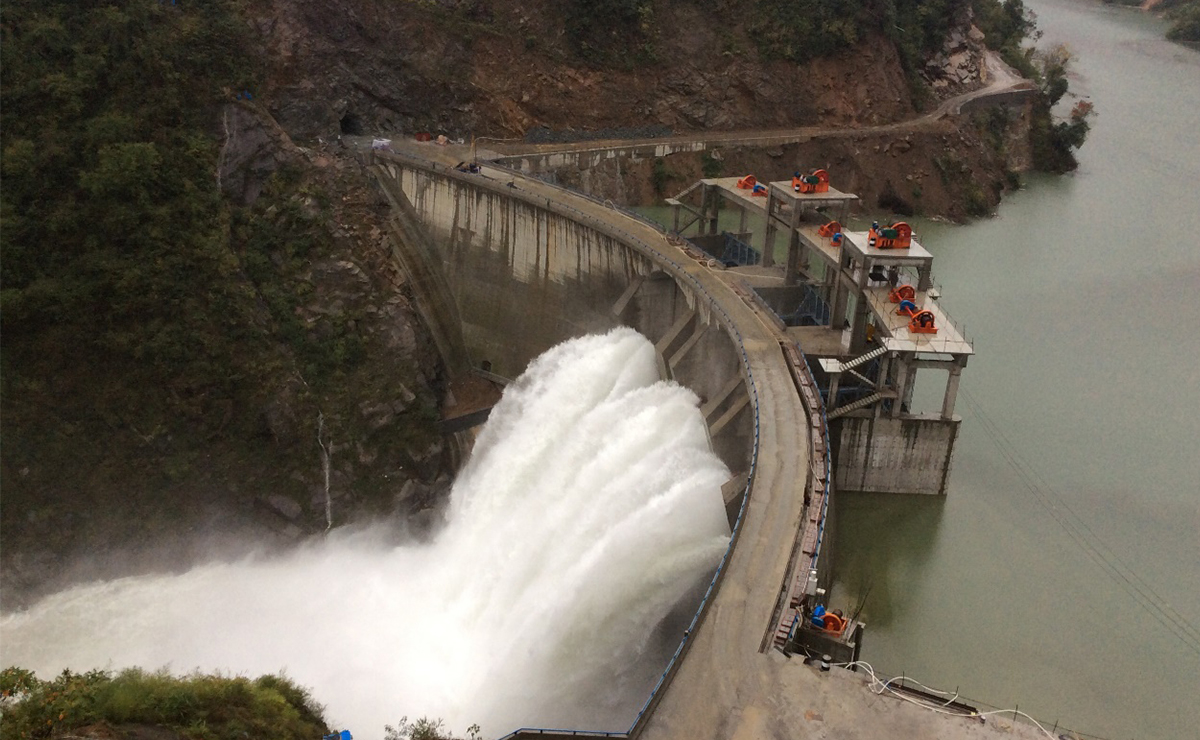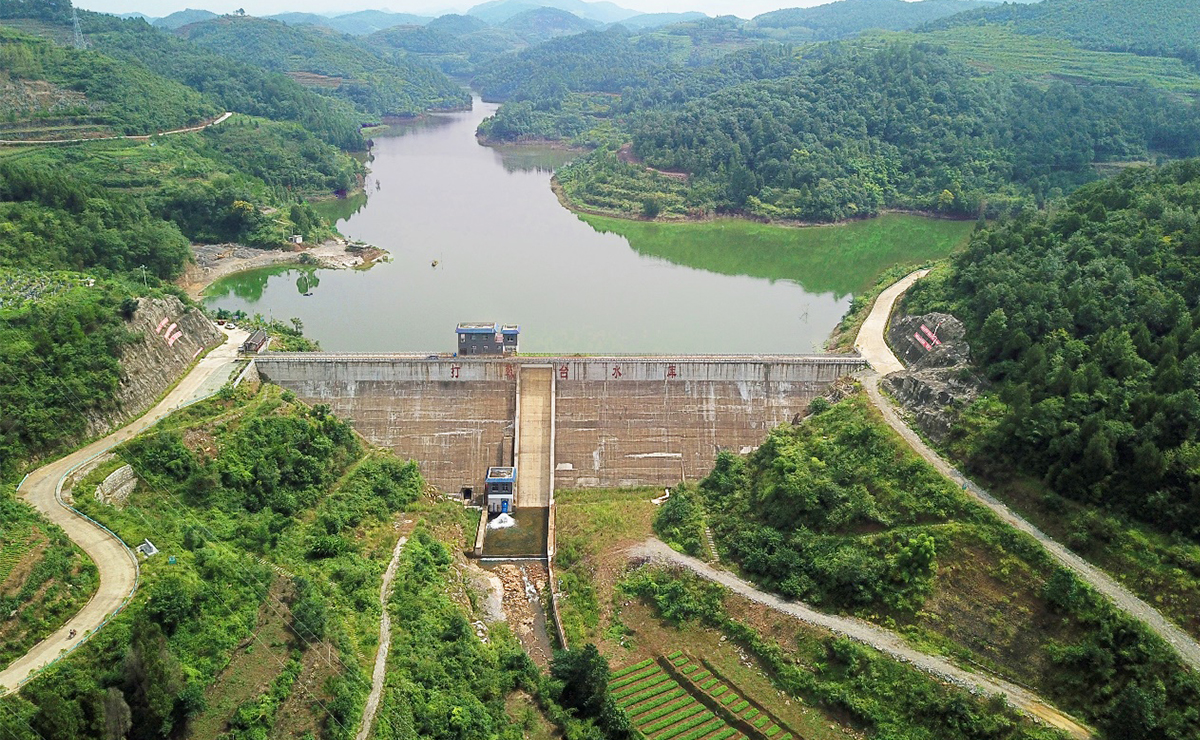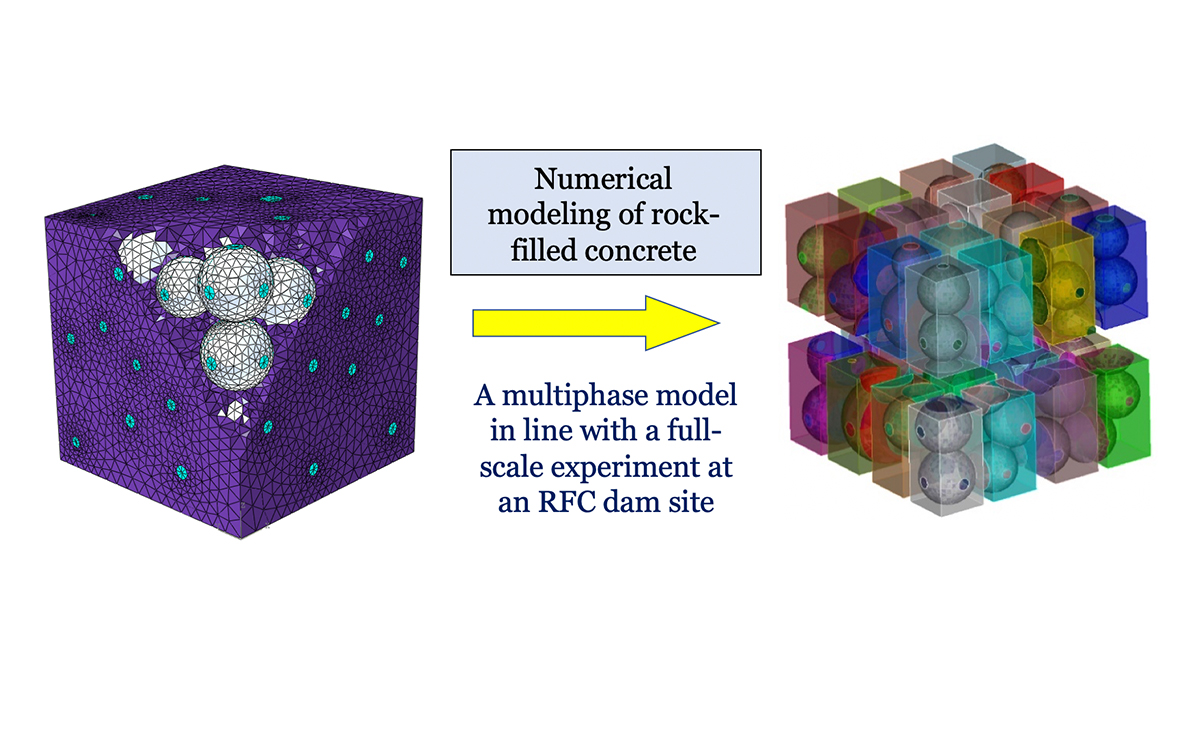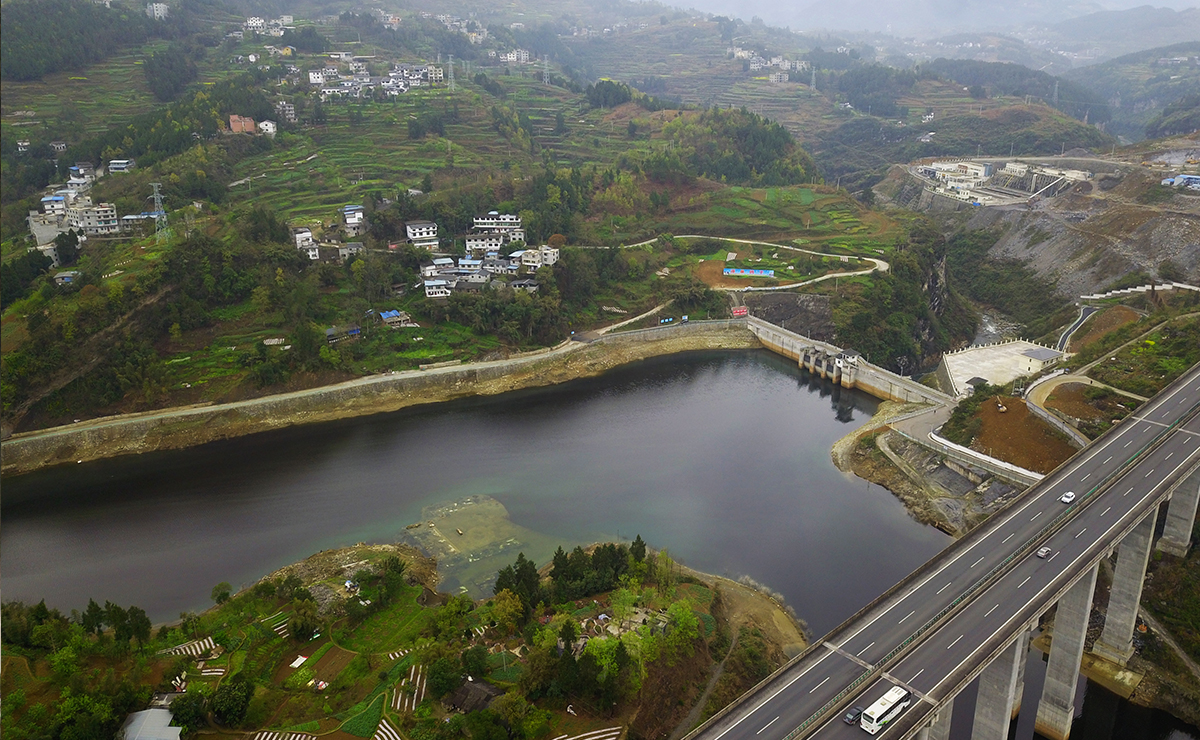Using rock-filled concrete to make large dams means they are stronger, cheaper, and more environmentally friendly to build.
By most measures, China is the world leader in dam building. It leads the world in number of large dams, defined as structures of more than 10 to 15m in height by the International Commission on Large Dams (ICOLD). China’s dams also generate the most hydroelectricity – more than the next four countries combined.
It should be no surprise, then, that in recent years China has made several breakthroughs in the technology of dam construction. One of the most significant advances has been rock-filled concrete (RFC). Invented by professors Feng Jin and Xuehui An at Tsinghua University, RFC is a material typically made of local rocks that are bound by a special concrete.

The Baijia RFC double curvature arch dam in Shaanxi Province has a maximum height of 69m.
Since the two professors first imagined their new material in 2003, it has been refined and used in scores of new projects, both in China and abroad. “An RFC dam is 10 to 20% less expensive than building a conventional concrete dam of the same size,” explains Jin. “The use of local rocks reduces the amount of concrete needed, and the nature of the material reduces or eliminates ongoing cooling, labour and transport costs.” Importantly, RFC dams are also less likely to crack because less concrete is in use.
Less concrete
Other modern dams are usually made mostly of concrete. But air bubbles and cavities can compromise its strength, so must be pushed out by mechanical vibration or roller compacting after it has been poured. These processes add to the expense of pouring concrete, but without them the finished product may be seriously weakened.
Excess water added to improve malleability is also an issue. It will ultimately bleed out of the mixture, causing hardened concrete to shrink and crack. There is also ‘heat of hydration’, released by the chemical reaction of the cement in the concrete coming into contact with water. This again causes shrinkage as the hardening mixture cools. The standard way of dissipating it is to embed cooling pipes in the mold before the concrete is poured.
The use of rocks in RFC considerably reduces the demand for cement, explains Jin, thereby substantially lowering the temperature rise caused by hydration heat and reducing the shrinkage of concrete. “Because of this RFC dams can completely eliminate temperature control measures such as cooling pipes,” he says.

The Dagutai RFC gravity dam in Guizhou Province has a maximum height of 41m.
RFC, however, does require a special concrete. In the 1980s, a Japanese professor, Hajime Okamura, solved some of the problems of conventional concrete when he invented self-compacting concrete (SCC). By using high-viscosity admixtures and fine sand as an aggregate, he produced a mix with enough ‘flowability’ to fill every space in complex molds, with no need for tamping or vibration after pouring. Further additives called superplasticizers allowed his concrete to be made with less water. “But SCC still faces high hydration temperature rise, significant shrinkage and is expensive, because it uses a high proportion of cement,” explains Jin.
The insight of the Tsinghua professors was to further develop the Japanese wonder material to a point where it could be poured into molds filled with medium-sized rocks. By tweaking the different ingredients, they arrived at a mixture – called high performance self-compacting concrete or HSCC – that can flow around each and every rock in a space, to fill every last nook and cranny. The resulting RFC contains no air bubbles or cavities.
RFC as a dam-building material is significantly cheaper than the Conventional Vibrated Concrete or Roller Compacted Concrete it replaces. The use of HSCC does away with the need for mechanical compacting or vibration, which in turn reduces requirements for skilled labor and equipment.

A multiphase model for rock-filled concrete in parallel with an onsite full-scale test at the Lyutang RFC dam site.
Only about half as much concrete is needed to build RFC dams, which are often built in remote locations. Less material for mixing concrete needs to be trucked in from afar, replaced by rocks that can often be sourced locally. Less concrete used also means less heat of hydration is released when RFC is made. So much so, that cooling pipes can be dispensed with.
Moreover, tests have shown that RFC has higher compressive strength than pure concrete. The rocks in RFC, it turns out, restrict shrinkage in the concrete between them and limit the propagation of cracks.
Lastly, making cement creates the emission of a great deal of CO2, so using RFC as a construction material is an environmentally friendly alternative. One 2013 study by An and two US-based collaborators puts this CO2 reduction at 64% when compared to conventional concrete.
Global dam building force
Since they first created RFC 18 years ago, Professor Jin and his team have worked hard to make it better and easier to use. They have standardized and codified its use for designing and building dams. Several national and sector standards have been issued, and the technique has received more than 30 national patents. RFC has also been recognized by the International Commission on Large Dams (ICOLD), a significant international dam building industry association.

The Maoxigou RFC gravity dam in Guizhou province has a maximum height of 44.5m.
The efforts of the Tsinghua engineers have been paying off. Within China, more than 120 RFC dams have been completed or are under construction. RFC dam projects are due to break ground in other countries, including Pakistan, Burundi and Turkey. The Songlin gravity dam now under construction in Yunnan province is one of the largest RFC dams so far, at 90m high and 230m wide.
Moving on from gravity dams, Professors Jin’s team has also made great progress with the use of RFC in arch dams, a graceful and efficient design works by directing the force of the water it holds back into its abutments. Challenges normally arise in the design of the transverse joints between the dam sections that make up such structures, and the grouting used to fill them, but because RFC is less prone to thermal expansion and contraction, for example. Due to this, there is less need for separate sections to accommodate these changes, and consequently there are fewer joints between sections.
More than ten RFC arch dams have been completed or are under construction. Projects at Baijia, Shaqian, Niudongkou in China are all above 60 m in height.
“We are also hoping to build RFC dams in several One Belt and One Road Initiative countries,” notes Jin. “I believe in the future our technology will be used in dam projects all over the world.”